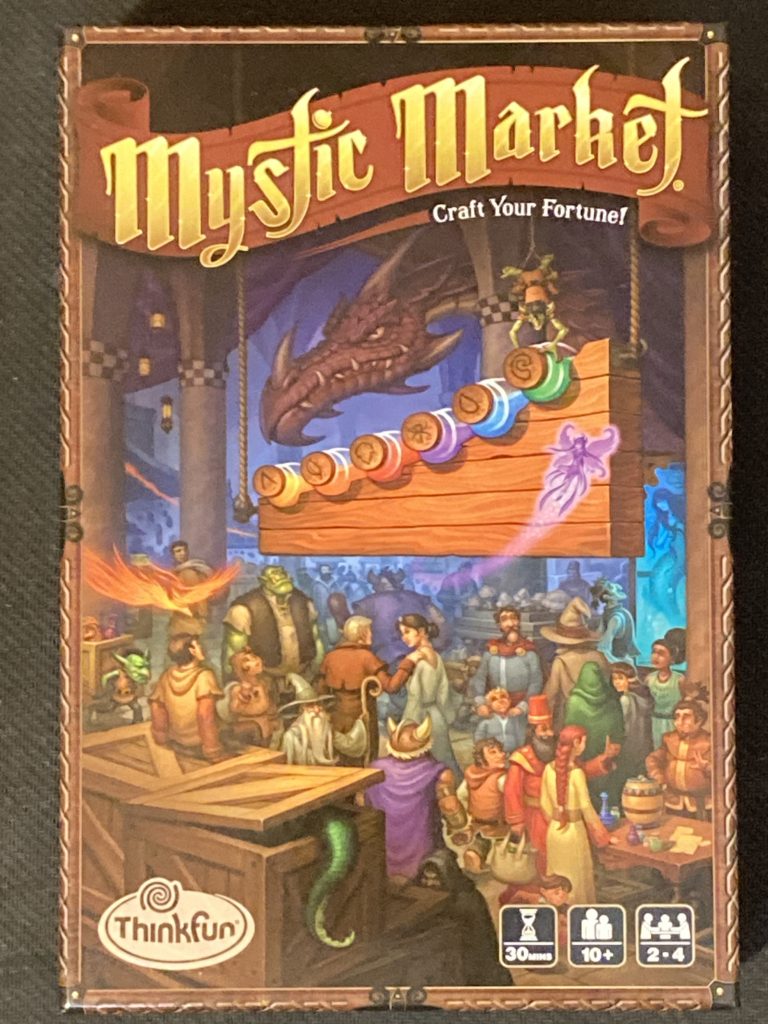
In August of 2022 I moved my brother-in-law into his college dorm. I visited the local big chain bookstore during that excursion. It was there that I discovered the game Mystic Market. It was tucked away on a shelf of children’s games – likely because of the cartoonish and fantastical art style adorning its cover. I am a sucker for anything fantasy related, so I perused the description and I thought it looked interesting. The price point was a meager $15 so I took a gamble. It has been a staple of family game night ever since.
Mystic Market Overview
Mystic Market is a set collection, commodities speculation, card game for 2 to 4 players published by ThinkFun games and designed by Ken Gruhl. The goal of the game is to earn the biggest fortune by buying and selling ingredients used for brewing magic potions. Players buy, sell and swap ingredient cards to influence market prices represented by a unique Value Track – a physical ramp that holds miniature potion bottles. Players can also use their ingredient cards to brew potions that grant them additional bonuses and income. The game also features “event” cards that unexpectedly impact the market and the prices of ingredients. A game runs once through the entire ingredient deck and when the last card is drawn, players tally up their earnings. The player with the most profit, wins.
Components
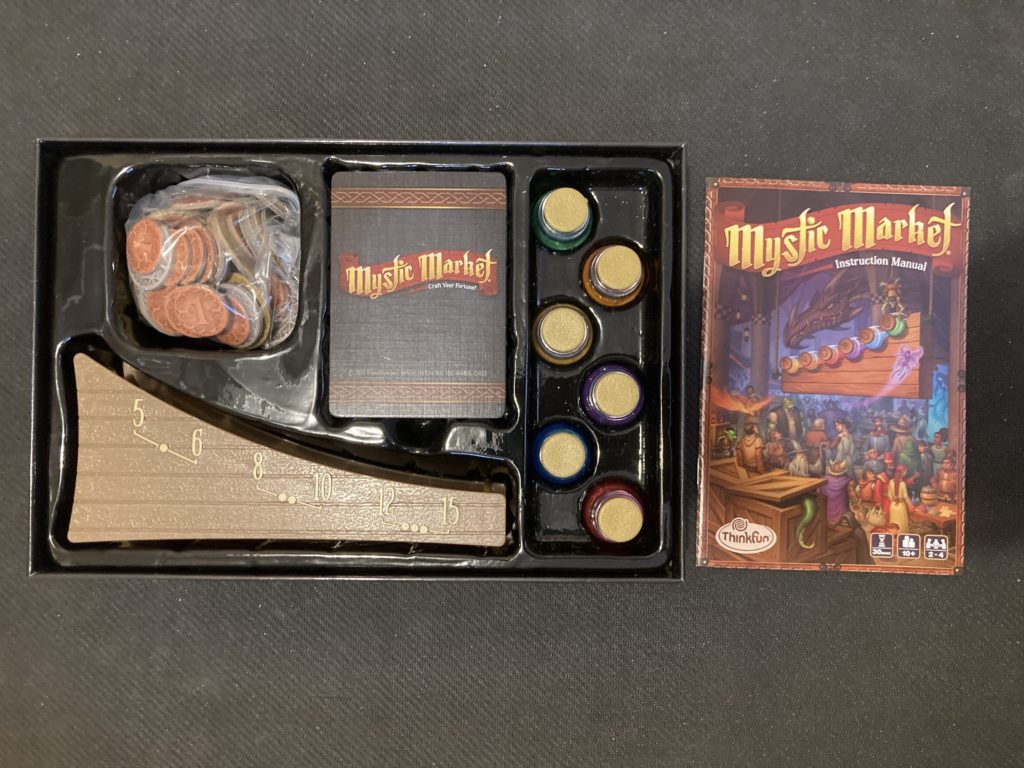
This game features two card decks (ingredients and potions), coin chits in increments of $1, $5, and $10, a Value Track (a plastic ramp), and six glitter-filled sealed glass jars. When equipped with the glass jars, the Value Track is one of the cooler mechanics that I’ve seen in a game. The jars have some weight to them and feel, well, valuable. It is fun to lift a jar from the track and spill the rest of them down the ramp. Markings on both sides of the Value Track indicate the buy and sell prices for sets of ingredient cards. It is a clever design and mechanic, one that makes this game stand out from similar commodity speculation games.
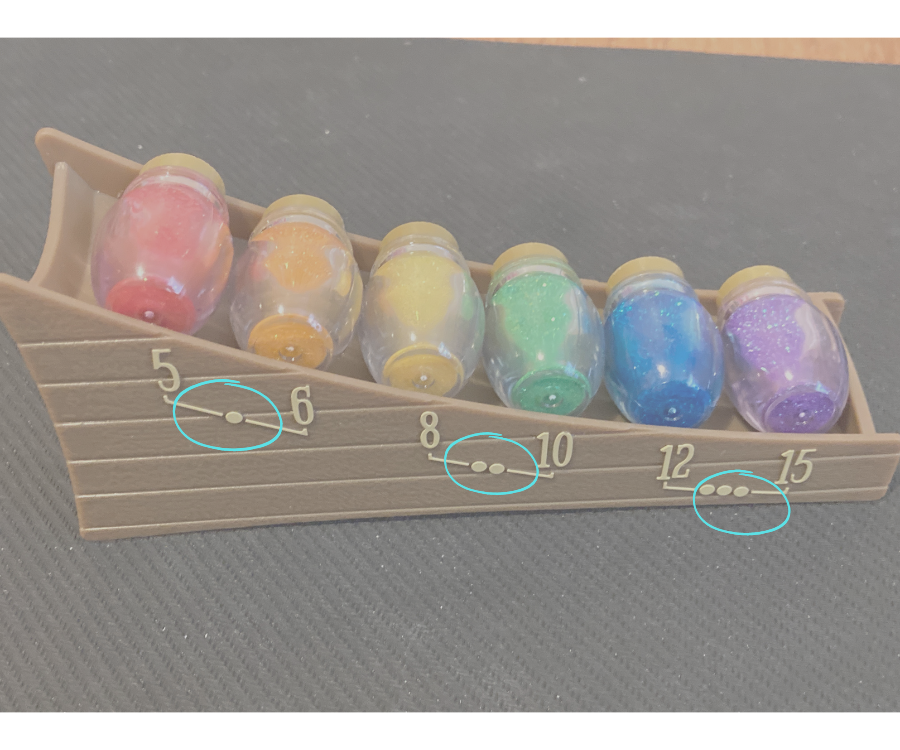
indicate the cost to buy ingredients
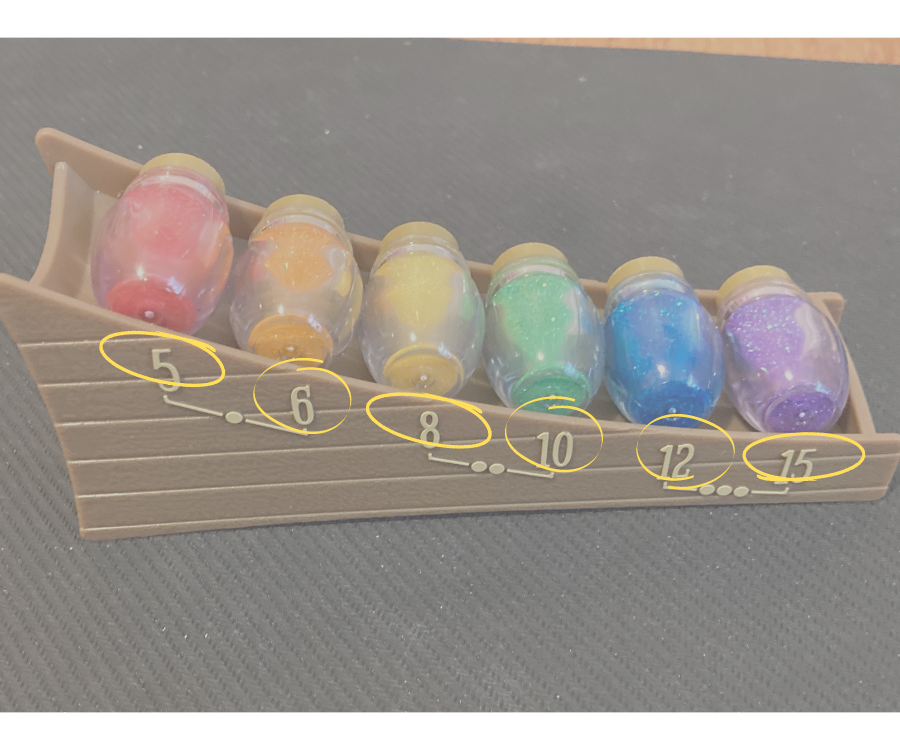
the profit for selling each ingredients
Mystic Market Setup
Mystic Market is easy to set up. Players shuffle the ingredient cards and lay out a community of five cards known as the ingredient market. The players each receive four cards from the deck and the remaining cards are put off to the side of the ingredient market. Players also take an “On Your Turn Card” for quick reference during the game. The publisher suggests playing your first game of Mystic Market without potions and event cards to get a sense of how the Value Track will influence the game. If players want to play the full version, they then shuffle the potion deck and lay them in a row above the ingredient market and place the remainder of the deck off to the side of the row. Players each take a silver $5 coin chip. The remaining chips are placed into piles by coin denomination to the side of the play area. Lastly, the Value Track is positioned so everyone at the table can see it clearly.
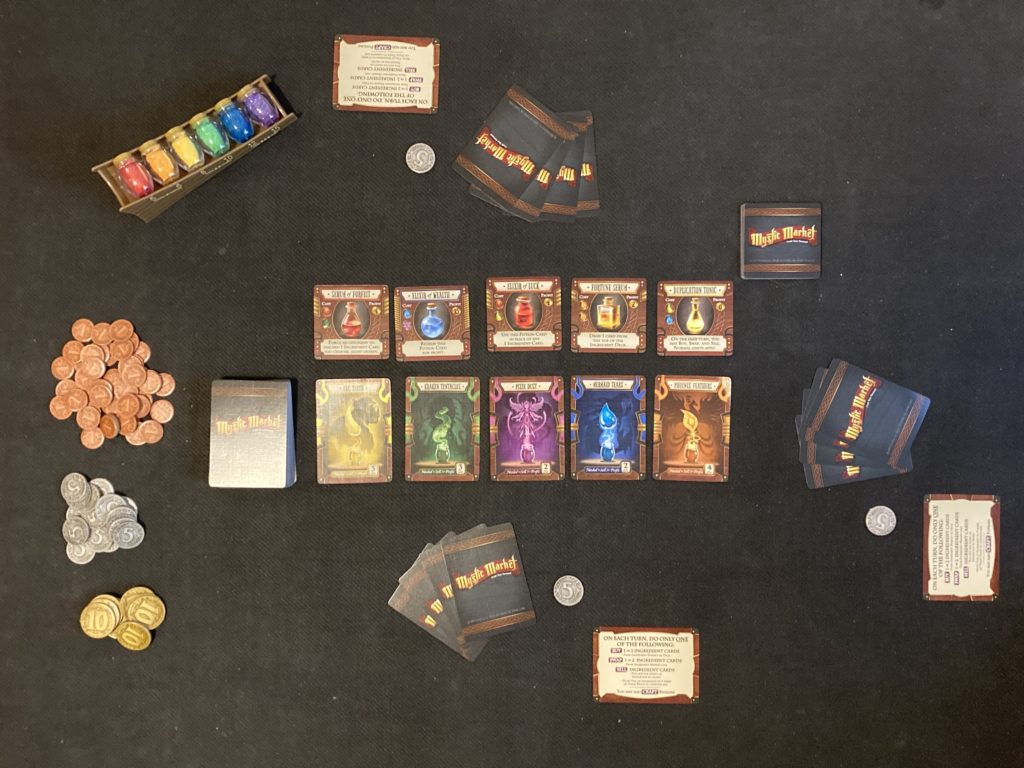
Game Play
After the board is set up a player is chosen at random to begin play and play proceeds clockwise. On their turn, players must make a choice to perform only one of the following turn actions, though the sell option has no limit:
- Buy – players may buy cards from the ingredient market based on the ingredient’s price indicated on the Value Track. Ingredients cost $1, $2, or $3. If they purchase a card from the ingredient market, the card is replenished from the deck. Players also have the option to buy a random card from the deck at a cost of $2.
- Swap – alternatively to buying ingredients, players can swap up to two cards from their hand with any two cards in the ingredient market.
- Sell – players may sell as many times as they want if they choose this action. To collect a profit, players must sell complete sets of ingredients as indicated by the number in the lower right corner of the ingredient card: Red and Orange ingredients (4 cards per set), Yellow and Green (3 cards per set), and Blue and Violet (2 cards per set). When players sell a complete set, they pluck the ingredient jar from Value Track and move it to the top, setting in motion a supply shift. Players also have the option of selling a single ingredient for no profit but to initiate a supply shift and adjust market prices.
In addition to one of the three turn actions, players also have the option to craft a potion. Players can perform the craft action before or after they buy, sell, or swap.. To craft a potion, players must discard the necessary ingredients and token cost. They can craft as many potions as they want on their turn and potions can be played at any point in the game (even during another player’s turn).
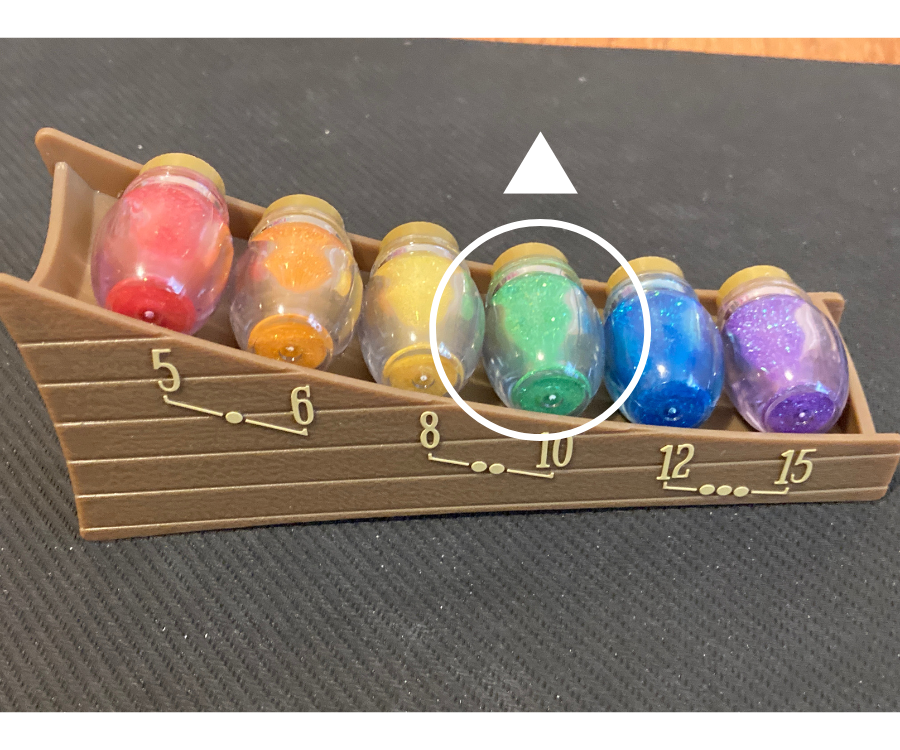
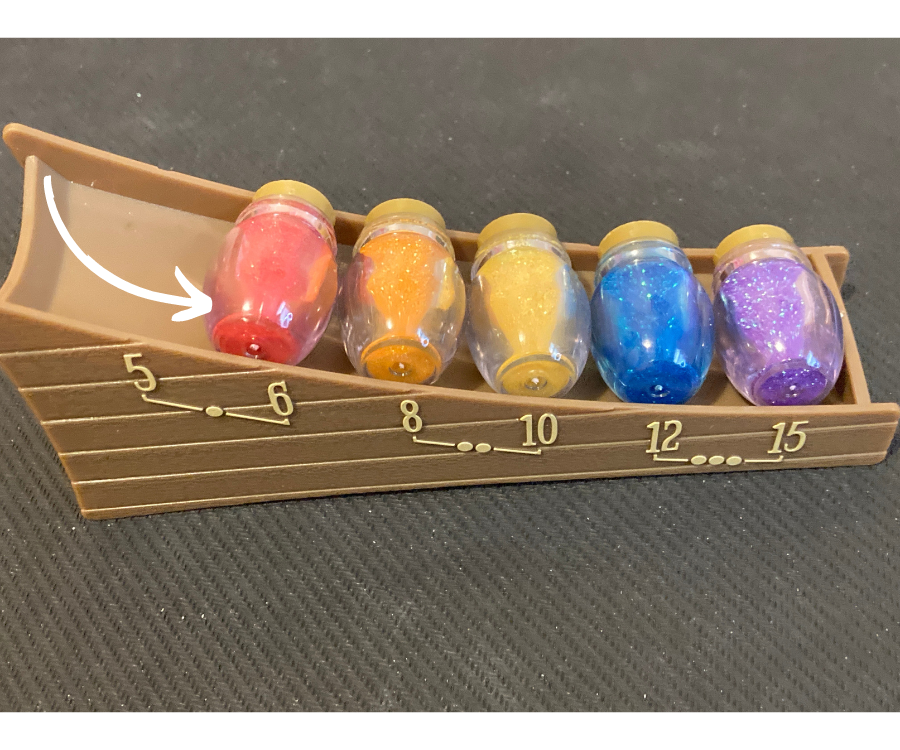
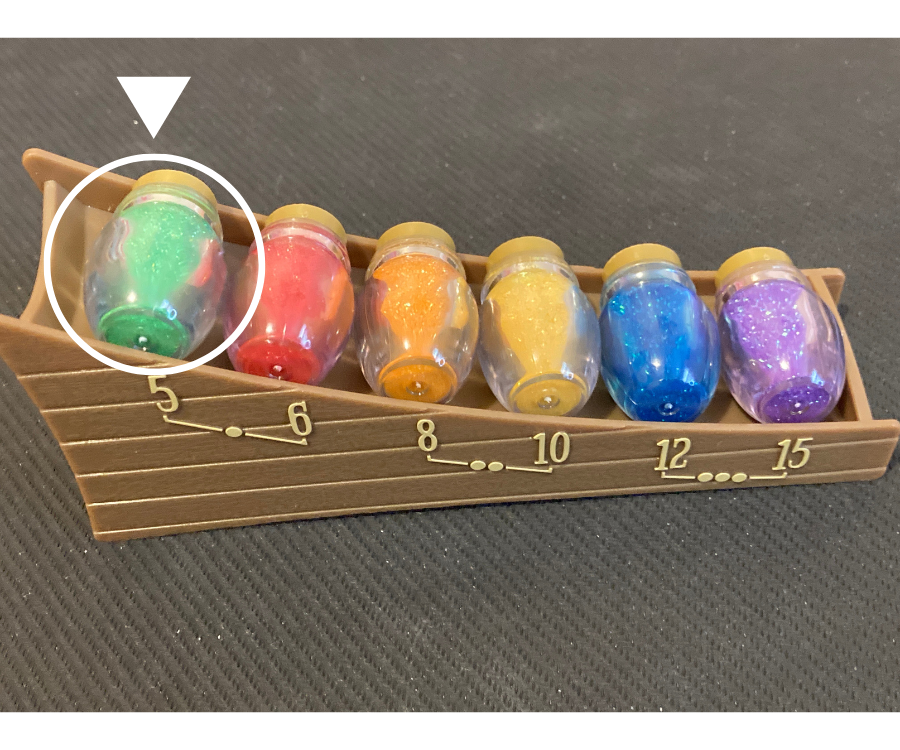
End Game
The end of the game is initiated when the last ingredient card is drawn from the Ingredient Deck. Once drawn, the player completes the turn, then all players get one final turn. The player who has collected the most profit after that round is the winner.
Mystic Market Impressions
When I happened upon this game in the children’s section and examined the packaging, I had the sense that it was erroneously shelved. After playing my first few games, my assumption was confirmed. While I think this game is suitable for younger kids, the nuances involved in manipulating the supply shift, the timing of playing potions, the patience required to collect ingredient sets, and the decisions about money management, it is a game better suited for a more experienced audience.The only hiccup we ran into when we first attempted this game was remembering that the coin icons on the Value Track were not pointing to the numbers above them (we kept buying jars indicated by the #s rather than the coin icons).
This game is a ton of fun! If your family game nights revolve around other card games (Uno, Apples to Apple, Cards Against Humanity come to mind) this game is a stepping stone to more advanced card games and game mechanics. The games are quick, between 15-20m. You can play several games in an hour. It is a fantastic gateway game.
Final Verdict

The rapid and ever shifting elements make Mystic Market an interesting game experience. I don’t typically gravitate to this sort of game (I lean towards Eurogames and crunchy war games), so for it to lure me in and keep me reaching for it on game nights is a testament to how fun it is. As far as family games go, this game scores 5-out-of-5 stars. That stated, my overall rating for the game is a 4-out-of-5 (a really high 4, mind you), fully acknowledging my bias for longer, more complex games.

Review by Rob Van Auken
April 2023





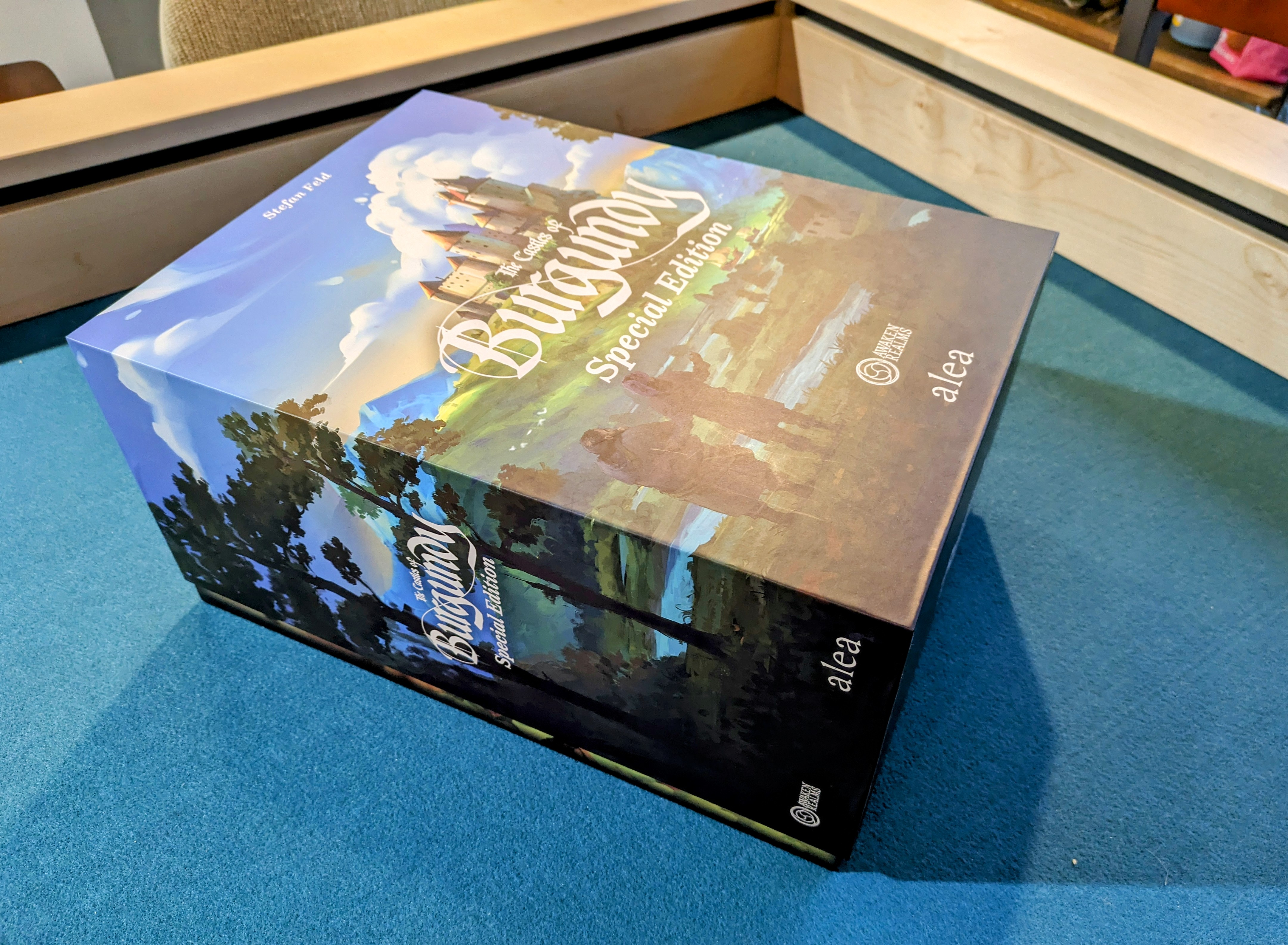
Leave a Comment